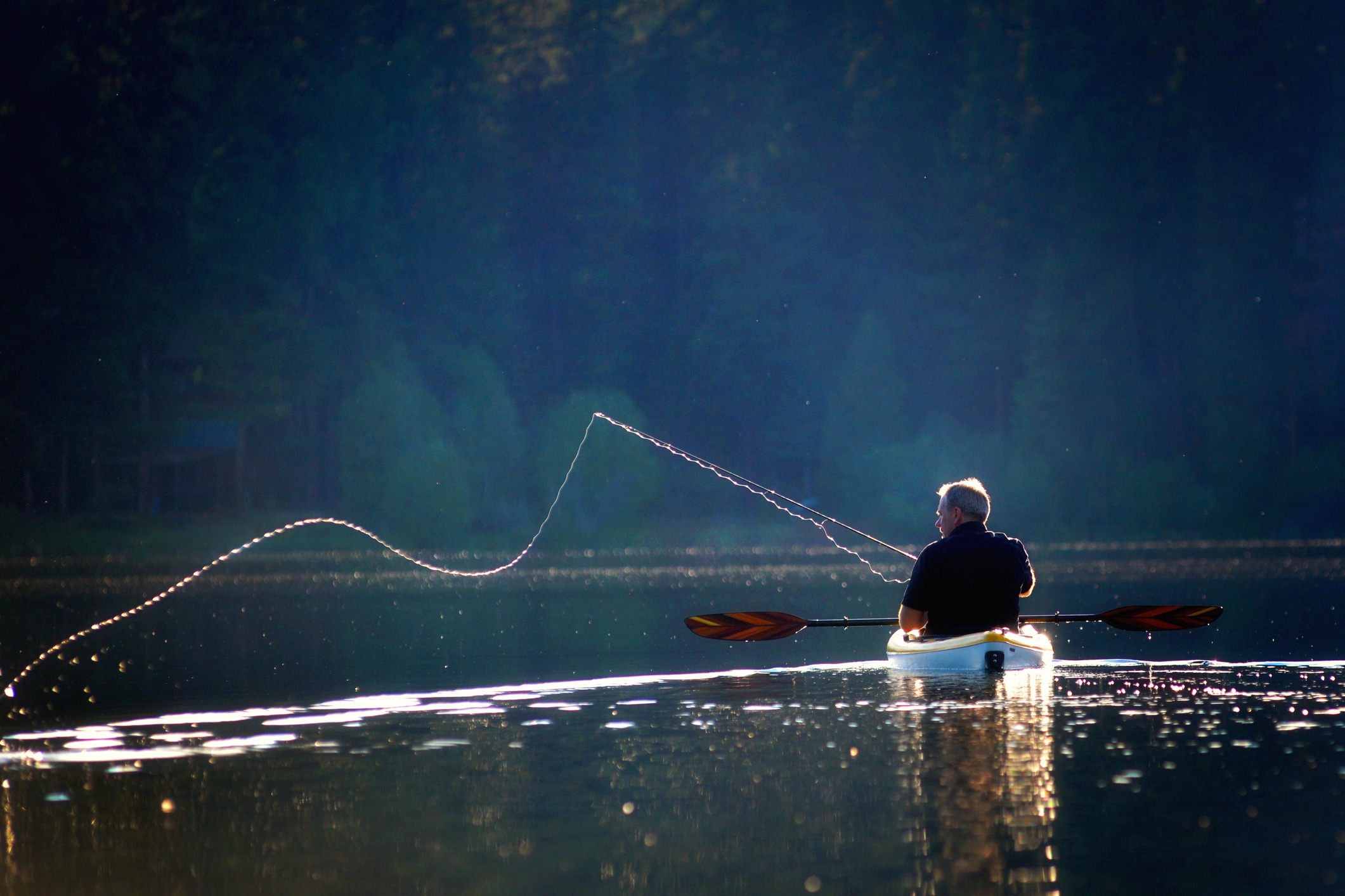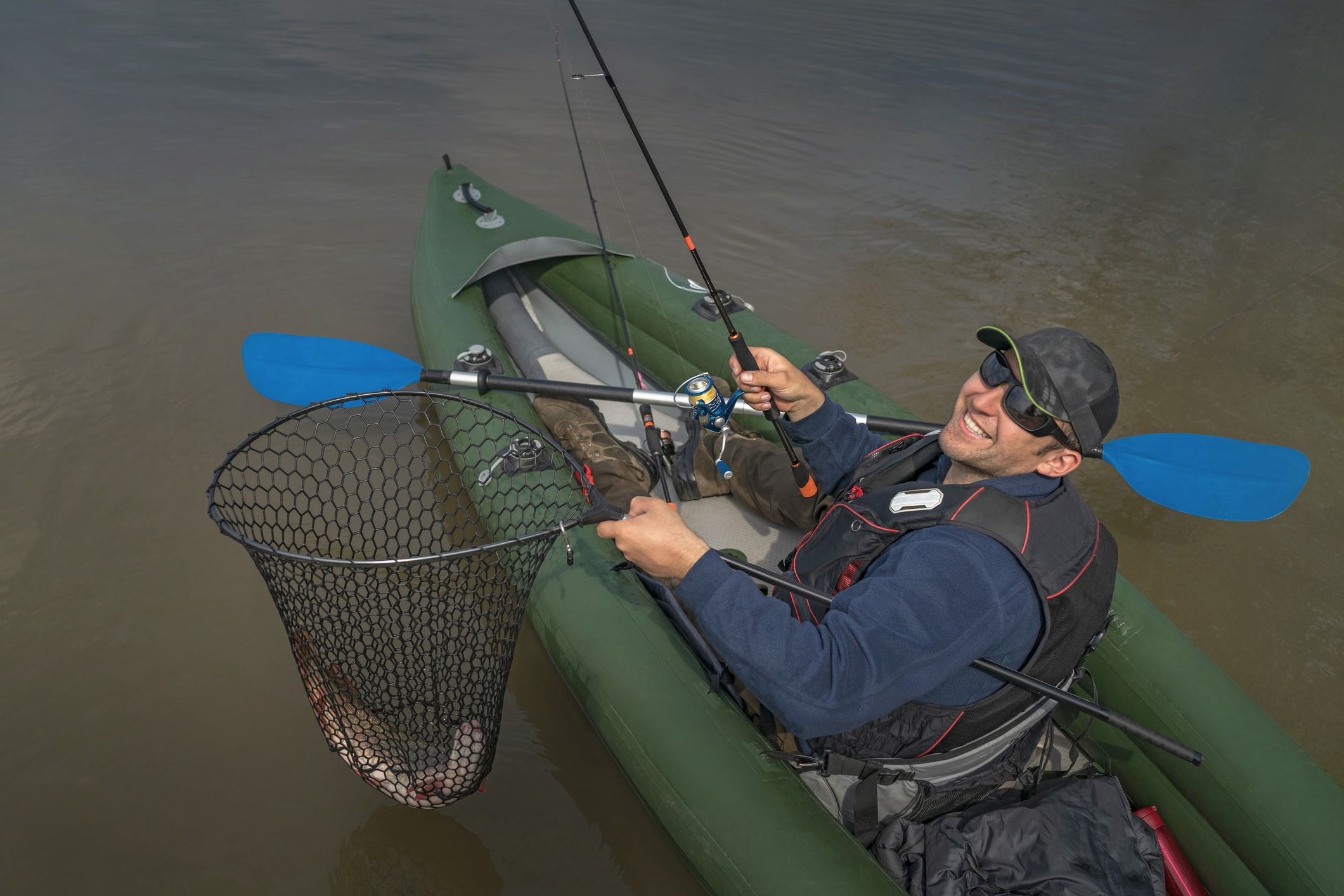WEnRV travel news, products, and industry trends
The Beginner’s Guide to Kayak Fishing: From Sneaky Paddling to Careful Casting
Six years ago I bought my first kayak after fishing for two decades. Why? To be honest, I bought it because I got bored.
There are many reasons why people consider kayak fishing, but it’s important to understand that there’s a lot to learn and many adjustments to make when switching from boat or bank fishing.
In this beginners guide, I want to focus on the applicable tips that you’ll be able to take on the water right away.
Choosing Your Kayak
Finding the right kayak comes down to three major factors:
Where you plan to fish What you want to catch What the water looks likeThere are usually a few different reasons why someone chooses to fish with a kayak. You may not have enough room to store a boat, the budget for a boat, or you’re simply fishing water that is better accessible through a kayak.
I want to focus on that last reason. That’s the main reason why I’ve chosen kayak fishing as my preferred method and I’ll get into a lot more detail on that later on down the article.
When you’re in the pro shop or online shopping around for kayaks, here are the factors you’ll need to consider:
Width

Getty Images
The width of your kayak will play a role in its overall stability. The wider the base on your kayak, the more stable it will be; this is the general consensus. What you’ll come to realize is that some people are very comfortable in kayaks while others are not.
If you’re part of the group that “is not,” you’ll need to pay a lot more attention to this. Most kayaks will have a width between 35 to 45 inches. A kayak with a width over 40-inches will be very hard to flip over, no matter how hard you try. The more narrow ones will require a little effort on your part.
Length
The length of your kayak helps with maneuvering, but it can also hurt you if you’re fishing canals or narrow creeks. Overall, I think going for a longer kayak is the best option because it’ll handle rougher waters better and provide more weight to help prevent you from rocking or tipping. Anything over 10-feet is considered a decent length.
Weight
The weight of your kayak matters because you’re going to have to get it out of your vehicle or down from it and then get it to the water. If you’re a beginner, chances are you don’t have a cart to roll it so you’re probably planning to carry it.
You also need to keep in mind that you have to get it out of the water by yourself. Most fishing kayaks weigh around 100 pounds, so it’s important to keep that in mind.
Fishing Features
Not all kayaks are created equal and some are designed specifically for fishing. These kayaks come with features like rod holders, live wells, and plenty of space to store gear and access it while sitting.
Keep in mind that fishing kayaks are more expensive than traditional ones so if you’re trying to save some money and you go for a regular kayak, you may not have a lot of these features. It can also make accessing your gear more difficult.
Are Inflatable Kayaks Good For Fishing?
This is a question I get all the time, and the answer is “kind of.”
The notion that you could pop an inflatable kayak with the hook is nonsense because these are all made of really tough and durable materials. You probably wouldn’t be able to puncture the kayak with a hook if you tried.
I worry more about encountering rough water in rivers. Inflatable kayaks are also very light, so they can be more difficult to control, especially in the wind.

Getty Image
Gathering Your Gear
We know all about the obvious so I’m going to leave that out of this guide. You know you need a rod, reel, tackle box, bait and all that. That’s not what this guide is about. What special gear do you need specifically for kayak fishing?
PFD — I’m not a “safety patrol” guy who is always looking out for everyone and preaching about life jackets but I think, especially in the beginning, you should wear a personal floatation device (PFD) when kayak fishing. Everyone flips a kayak at least once and having your PFD will help you even if you’re a good swimmer. It’ll help you focus on recovering your gear.
Paddle Leash — This is another purchase that you won’t know you need until it’s too late. A paddle leash attaches to the paddle and the kayak to prevent it from going overboard. Most paddles will naturally float but this will help prevent it from getting away from you.
Fishing Net — When you’re in a boat or on the shore, you can get away with reaching down into the water to pull out a fish or pulling it up on grass if it’s light enough. In a kayak, you need to be more careful about how you handle yourself, so having a net to pull out the lunkers is helpful.
Kayak Anchor — A lot of people don’t think about anchors in kayaks but just like in a boat, you need one. Kayaks are lighter, so they get pushed around the lake more easily. Having a kayak anchor will help you when you locate a spot you want to hang out for a while.
Top Tips From a Kayak Angler
You’ve got your kayak and your gear together, now you just need to master kayak angling. If you fish regularly, some of these tips may apply, whether you fish from a kayak or not but these will really help the beginners. Take a look.
Be Quiet
Stealth is key with kayak fishing, and when you’re fishing for bass, you need to do everything in your power not to scare them away.
Be calm and gentle with the paddles, don’t move around too much, don’t bang your feet in the kayak, and be careful about casting too many shadows with yourself and your rod. If you’ve ever wondered why people put carpets in their boats, this is why.
Cover the Water
The best thing about kayak fishing and the reason I fell in love with it is because I could access places on the water that other people couldn’t get to. I could go into the little alcoves and eddies that people in boats or on the shore couldn’t reach.
You know this is where the bass are hiding, but many people are afraid to go there with their boat or they simply can’t get the cast accurate enough to make it there.
The best thing about kayak fishing is going after a period of heavy rain to discover all of the high water locations that weren’t available before. I recommend covering a lot of water in a short amount of time to really see what works.
Rig Rods Ahead of Time
Having to constantly rig hooks and fumble through your tackle box in the kayak is not fun. I don’t recommend it. What I do suggest is that you rig everything ahead of time as much as possible.

Photo: Coty Perry
Of course, when we get out on the water, we can change our minds or decide to switch to something else for whatever reason. But do your best to plan ahead and have everything geared up so you don’t have to mess around. This will also leave more time for casting!
Master Paddling
Any kayak fishing expert you talk to will tell you that you need to figure out paddling before you can fish from a kayak. They’ll recommend taking the kayak out once by itself and just practice paddling around the lake or river.
You’ll be surprised how difficult it can be to paddle yourself when you don’t have a firm understanding of how to manage the kayak on the water. Once you get the hang of controlling it, you won’t have to paddle as much, and you’ll free your arms better for casting without having to drop anchor.
Wear The Right Clothes
Like fishing from any other vessel, you’re fully exposed. You don’t have trees or really anything to protect you so be sure to bring sunscreen, wear a hat, sunglasses and whatever else you need to protect yourself.
One thing that is a little different with kayak fishing is how close you are to the water. In most kayaks, you’ll have less than a foot of clearance from the water on each side so you can expect to get wet. Dress appropriately.
Use Electronics

Garmin Striker. Photo: Coty Perry
Whenever you can, I recommend using a fish finder because it helps your game so much. There are so many portable units and lightweight equipment that make it perfect for kayaks. You don’t have to permanently install anything and you can make them removable so they don’t get damaged on the drive out.
The Garmin Striker Vivid 4cv is a great lightweight and portable option that’s easy to install. It comes with GPS, waypoint mapping and Quickdraw contours that help you get a full picture of what’s happening beneath the surface. Best of all, it’s affordable at less than $200.
Ease Up Your Casts
You’ll have to adjust your casting when you go fishing on a kayak because we’re so prone to really winding up and buzzing it. Instead, you’ll learn to finesse a little more to prevent rocking the kayak and making a bunch of noise. Giving the line more of a rainbow cast versus a line drive is recommended.
Netting Results
I hope this guide helps beginner kayak anglers get out on the water. If you’ve been thinking of buying a kayak but you’re on the fence, I highly recommend it. This is a great way to really get in touch with nature and enjoy fishing with a more primitive perspective. I fell in love with this way of anglin’ and I think you will too. Good luck out there!
The post The Beginner’s Guide to Kayak Fishing: From Sneaky Paddling to Careful Casting appeared first on Good Sam Camping Blog.
Copyright
© Good Sam Camping Blog


